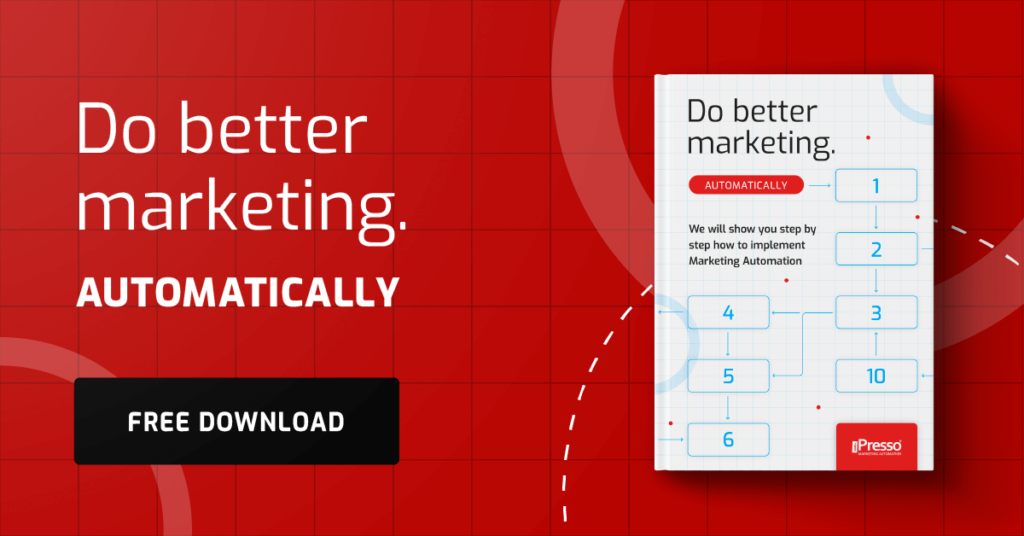Customer needs analysis – why is it the foundation of your marketing strategy?

Many marketers think they know the specific needs of their customers. But is that really the case? In fact, without solid analysis, it’s often just an assumption or, even worse, your hunch. In today’s fiercely competitive market, truly understanding the customer is not an accident but the result of a thoughtful process.
Understanding the customer today is not only the basis for successful sales but also a key element of marketing strategy. With it, companies can:
- Build customer loyalty
- Develop products that meet real expectations
- Communicate in ways that engage your audience
In addition, more and more companies are supporting this process through marketing automation – integrating customer data with tools that allow them to conduct personalized communication on a large scale.
Let’s look at this in more detail.
Why is customer needs analysis so important?
Nowadays, understanding customer needs is not a choice – it’s a necessity. Companies that successfully analyze the expectations and behaviors of their customers build stronger relationships, offer more relevant products, and achieve a competitive advantage. Here are the main reasons to put customer analysis at the center of your marketing strategy:
Developing a relationship with the customer
Needs analysis is the first step to creating a positive customer experience. When your brand shows that it knows and understands the expectations of the customers, it is easier to build loyalty and trust. Customers want to be noticed, and you can respond to their needs before they even express themselves.
Tailor the offer to the customer’s needs
Through detailed analysis, you can create offers that are precisely tailored to the expectations of a specific audience. Instead of shooting in the dark, you give the customer exactly what they are looking for, thus increasing the chances of conversion.
Competitive edge
Companies that can accurately interpret customer data react faster to market changes and are able to offer better solutions than their competitors. So, knowing your users’ needs allows you to respond faster and more accurately before someone else does.
Here’s an example: Imagine two cosmetics brands – let’s call them Brand A and Brand B. Both offer similar products, but only Brand A regularly analyzes customer feedback on social media and the results of post-purchase surveys. This way, it notices the growing interest in natural ingredients and launches a line of vegan cosmetics before its competitors do. The result? This brand gains new customers, strengthens its position, and increases sales. All because it can listen and respond faster than others.
Innovation and product development
Customer needs analysis also inspires innovation. By gathering feedback and analyzing behavior, you can capture new expectations that haven’t yet been addressed. Moreover, you can develop a product that will conquer the market.
Risk minimization
Data-driven business decisions reduce the risk of misguided investments. If you know your customers’ preferences, you are more likely to implement actions that will bring real benefits – both to you and to your audience.
Methods for recognizing customer needs
Getting to know your customer starts with the right tools and methods. Here are the most effective methods of analysis:
Direct contact with the customer
Phone calls, face-to-face meetings, or chat all provide opportunities to hear a customer’s needs live. Such face-to-face interaction often reveals true emotions. Customers are eager to share feedback if they feel that someone is listening – and this can be an invaluable source of inspiration for you to improve your products, services, and communications. However, it’s not always possible to meet directly with your customers, who also won’t always want to talk directly about their needs. Fortunately, with data analytics, you can get that information.
Data analysis
Nowadays, we have access to a huge amount of information, but we just need to know how to use it. Customer behavior data, preferences, or purchase history are at our fingertips. Properly interpreted and combined with automation tools, they allow us to create personalized campaigns – reaching the right person at the right time and with the right message.
Analysis of user behavior
Monitoring what a user does on a website, i.e., what they browse, where they click, how long they stay – is a mine of knowledge about their intentions. As such, the following tools come in handy:
- Recommendation frames: They help you analyze a customer’s browsing history, clicks or purchases. Based on this, they suggest personalized products or content – which significantly increases the chances of purchase and engagement.
- Data Collector: It’s a tool that automatically collects data on user behavior on the site (e.g. clicks, dwell time, purchase paths). This solution allows not only to better understand users but also to tailor content and offers to their current needs.
Analysis of sales and purchase history
Data from past transactions tells a lot about customer preferences. More often than not, it allows for the prediction of future behavior. Among other things, RFM reports are used for this purpose. And what does RFM stand for?
- Recency: which means how long ago a customer made a purchase.
- Frequency: how often the customer buys.
- Monetary: which refers to how much money the customer spends.
Customer segmentation
By dividing your customer base into segments (e.g., by age, location, interests or buying behavior), you can better tailor your marketing message and offer.
Let’s say you run an online store selling sports accessories. With segmentation, you can communicate separately with customers who buy running equipment, and differently with those who choose fitness equipment for the home. For runners, you’ll prepare a newsletter with workout tips and promotions on new models of running shoes, and for fitness fans – an offer on mats or kettlebells. This approach allows you to precisely target campaigns and increase their effectiveness.
Surveys
Sometimes, the simplest methods turn out to be the most effective. Surveys and forms can provide valuable information if they are well-designed. Ask customers about their needs, expectations, and evaluation of your offer – and then draw conclusions.
Contact database management
Effective analytics isn’t possible without a well-organized database. Structured, up-to-date and GDPR-compliant customer information is the foundation of effective marketing efforts.
A well-managed database allows a company not only to get to know its target group better but also to react faster to changing market conditions. It is a tool that, properly used, becomes a real source of competitive advantage.
It enables you to:
- Create personalized campaigns that reach specific people with a tailored message
- Easily identify audience segments
- Respond quickly to changing customer needs
- Automate marketing activities by triggering communication scenarios (e.g., emails, SMS, push notifications) in response to specific user behaviors, such as cart abandonment or website revisits
A properly managed database is the key to running data-driven marketing — based on facts, not guesswork.
Wrapping up
Customer needs analysis is not a one-time activity, but an ongoing process. By using the right tools and methods, you can not only understand your customers better but also meet their needs more effectively. And this – in the long run – leads to increased sales, loyalty, and a lasting market advantage.Looking for a solution to help you automate your marketing and reach customers more effectively? Try iPresso – click here, fill out the form, and we’ll contact you to discuss how we can support your business and help you grow.



